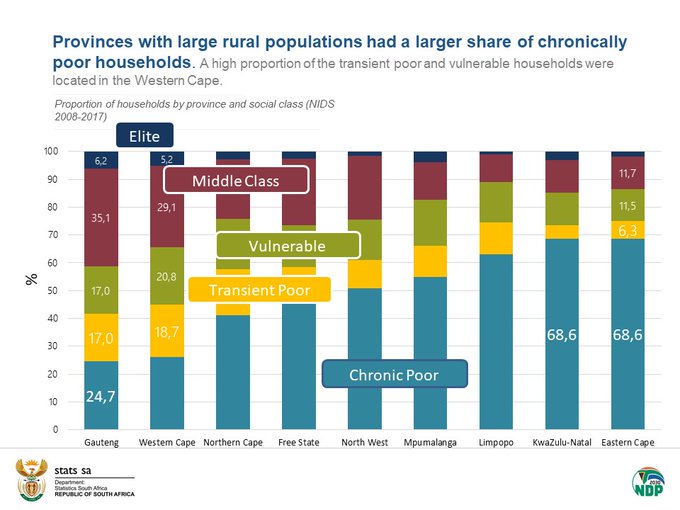MWANGI GITHAHU
 |
| Inequality in South Africa persists because poor people migrate to wealthier parts of the country in search of opportunities. File Picture: Henk Kruger/African News Agency (ANA) |
Cape Town - Inequality in South Africa
persists because poor people migrate to wealthier parts of the country in
search of opportunities.
This is the view of economist Dawie Roodt
on the reasons provinces such as the Western Cape and Gauteng are always cited
in studies on inequality as the two most unequal provinces in the country.
“The Western Cape is a very interesting
case. It is the second richest province after Gauteng and it also attracts the
most immigrants from within the country, particularly the Eastern Cape. The
more poor people come to the province in search of opportunities, the more
inequality will increase and that is the irony,” said Roodt.
“The poor won’t go to Limpopo for instance,
because it is poor, but going to a rich province improves their chances, while
at the same time widening the inequality gap.”
Income inequality means that a few make
much more money in a society than most others. South Africa’s income inequality
is particularly uneven, with a few high earners getting huge incomes while the
large poor majority’s income is dismally low.
According to the Statistics SA inequality
trends report released last week: “Provinces with large rural populations had a
larger share of chronically poor households and a high proportion of the
transient poor and vulnerable households were located in the Western Cape.”
There is an overall increase in the number of assets owned by South African households between 2009 and 2015.
Read more here: bit.ly/2QimvSL#StatsSA #InequalityTrendsinSA @ARUA_ACEIR @SALDRU1 @AFD_en @EU_Commission
Provinces with large rural populations had a larger share of chronically poor households. A high proportion of the transient poor & vulnerable households were located in Western Cape.
Read more here: bit.ly/2QimvSL#StatsSA #InequalityTrendsinSA @ARUA_ACEIR @SALDRU1
25 people are talking about this
On average, females earned less than males
across all educational levels. Females with no education and primary education
earned roughly 55% of what males in the same groups earned.
Black African- and coloured-headed
households were the only two groups classified as chronically poor, with black
African-headed households having the lowest levels of access to the internet
and the lowest access to medical aid coverage.
“South Africa’s labour market remains of
primary importance in understanding contemporary inequality in the country.
With an overall unemployment rate that ranges between 25% and 30% using the
official (narrow) definition, any empirical investigation into economic
inequality in South Africa would be incomplete without an analysis of the
labour market,” the report said.
Statistician-General Risenga Maluleke said
South Africa stood out as one of the most unequal countries in the world by
most inequality measures.
“There is growing recognition that
persistently high levels of inequality can have serious detrimental effects on
a society and its economy. For all of these reasons, it becomes clear why
reducing inequality is such a critical task from a policy perspective,” said
Maluleke.
The impact of apartheid policies has left a
legacy of unequal development across the South African landscape, manifesting
in regional inequalities in terms of access to education, health care, and
basic services (such as water, sanitation, refuse removal and electricity).
Since democracy in 1994, the government has tried to eliminate these
inequalities with varying degrees of success.
Overall, when examining progress at a
national level there appears to be notable areas of success and improvement.
Nevertheless, when examining this progress at lower disaggregations, the story
becomes mixed as there still are clearly some groups and/or places that lag
behind others in terms of access.






No comments:
Post a Comment